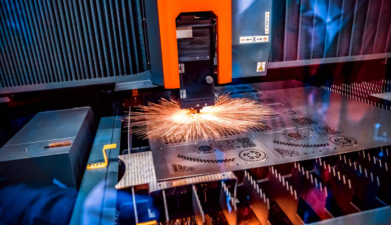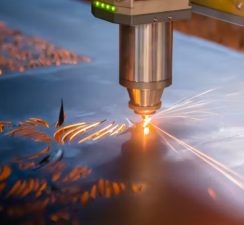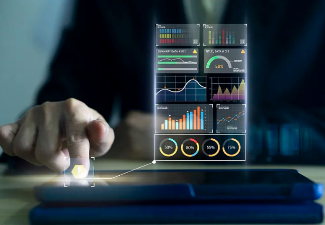If you decide to start a laser engraving business, it is certainly a wise move. As long as you appreciate craftsmanship, have the ability to deal with big clients, and feel empowered to be your own boss, there is no other business better than laser engraving. By investing in a laser engraving machine, you can join a multi-billion dollar industry and reap great monetary rewards. It opens doors of opportunity and broadens your business portfolio. To help you realize your laser engraving business dream, we have outlined a step-by-step guide on how to make it run smoothly and be profitable.


If you decide to start a laser engraving business, it is certainly a wise move. As long as you appreciate craftsmanship, have the ability to deal with big clients, and feel empowered to be your own boss, there is no other business better than laser engraving. By investing in a laser engraving machine, you can join a multi-billion dollar industry and reap great monetary rewards. It opens doors of opportunity and broadens your business portfolio. To help you realize your laser engraving business dream, we have outlined a step-by-step guide on how to make it run smoothly and be profitable.
Why start a laser engraving business? To this, a simple answer is, "Laser engraving opens up a plethora of revenue-generating opportunities."
Laser systems enable you to engrave nearly any design on a variety of materials. It gives products a personalized design or personal touch. This will be an attractive option for new businesses as consumers will be truly inspired by an object that has their details engraved specifically on it, so this will be a potential market.
With the help of laser engravers, the non-contact and highly accurate nature of the engraving process has found its way into a variety of industrial applications for marking, personalizing, and customizing products. You can deal with industrial and corporate clients who need engraving services in bulk. From creating beautiful employee of the month plaques to etching codes into manufacturing tools, laser engraving can make a lot of money in these spaces. According to the Bureau of Labor Statistics, aerospace, specialty design, foundries, and metalworking are the industries with the highest incomes for etchers and engravers.

Benefits of Starting a Laser Engraving Business:
- Customized Profits
The main benefit of a laser engraving business is that you can turn an ordinary piece of material into a unique, stylish, eye-catching, beautiful work of art. As customers focus more on personalized designs, you can profit from it, become an innovator, and gain an advantage over your competitors. Professional laser engravers can process different types of materials such as wood, plastic, metal, glass, ceramic, etc., so you can choose based on the type of laser you invest in.
- Maximize Productivity and Profitability
One of the reasons why the laser engraving business is highly profitable is the high beam’s ability to create customized products quickly, efficiently, and with high precision. Laser technology allows you to add designs to materials in seconds, ultimately making more profits and expanding your product portfolio. Larger orders of personalized products can also be produced economically using ComMarker lasers because multiple workpieces can be processed in a single batch. This reduces unit costs, which in turn maximizes profits.
- Scalable Processing
Whether you are engraving one product, small batches or handling large orders, a ComMarker laser system has a wide range of features to adapt to your workload. Its components have been specially developed and tested to function and last even under frequent use.
- Easy to Use
The material to be engraved is processed directly from the graphics program to the laser system via the engraving software. The result is comfortable data processing that allows for quick image changes. In addition, the positioning function of the laser software (keyword "nesting") helps to reduce material waste. For added convenience, the laser engraver comes with a detailed manual, ensuring that you get top-notch support. Brands such as ComMarker offer online support communities so you can get answers to any questions you have.
- Reduced Overhead
While an experienced laser engraver is expensive ($5,000-10,000), you can buy a smaller one from ComMarker for less than $500. A high-quality laser engraver like the ComMarker is a one-time cost that only requires an initial investment that you can quickly recoup once you are up and running. They generally do not require much parts replacement and can be used for years.
A wide range of laser engraving items is a good way to discover which products are attractive to the market and which items can be used to make big money. This decision is largely influenced by the competitive situation in your area: Are you the only laser service provider? Or are laser entrepreneurs already present? For example, are glass engraving or wedding decorations sold nearby?
Laser marking can be done on almost anything:
Wood, leather, aluminum, stainless steel, plastic, marble, stone, tile and glass. What needs to change for different materials is the power of the light and the number of light pulses per inch (PPI). Softer materials such as wood or plastic require less power and PPI for precise engraving. If you use too much force, you may burn the object. Harder materials, such as steel, require more strength and PPI to make a punch.
To get the most out of it, you have to keep the power and PPI balanced and optimize it according to the characteristics of the material, so that the burn is clean but does not damage the integrity of the object you are engraving. But there is also a lot of freedom in the power settings of the laser engraver, so you can determine the engraving quality that is right for you. To simplify, if you want to engrave materials such as wood, glass, paper or leather, you can use a CO2 laser.
Almost all the engraving tools available today have benefited in some way, and some advanced technologies like 3D, multi-layer, and color marking have recently come into the spotlight. For the engraving business, keep these trends in mind. The 3D engraving business has grown at an exponential rate as it includes the process of removing material from all three directions. The laser head moves horizontally and vertically over the workpiece, while the third dimension, i.e., depth, varies through the intensity of the laser.
This type of engraving allows fashion and jewelry brands to be creative and offer the most valuable merchandise to their audience. Using these engravers, the jewelry industry and fashion watches are taking customization to a new level. The versatility of this laser allows it to engrave on different surfaces and materials like metal and stainless steel. You can also work on crystal, glass, and plexiglass. In the case of glass laser engraving, this is mostly performed using a UV laser source. The 3D laser engraver market is a great business sector as it is trying to stay ahead of all other industries and is expected to grow in the near future.
Color marking technology, also known as laser coloring, is widely used in the laser industry due to recent technological advancements. But in the field of color marking, metals like titanium and stainless steel are common as it is easiest to get an oxide layer to change the light refraction of these mediums. This technology perfectly and permanently marks metal products with beautiful colors and designs. Incorporating color marking technology into the manufacturing process offers several incentives. The new technology increases production flexibility without aesthetic or part performance trade-offs, eliminates secondary marking operations, and reduces rework, scrap, and part inspection costs. The Mopa color laser marking machine does this effectively through its built-in software and computer control system.

Choose the Right Equipment:
The laser engraver is the core of your business, so it is essential to invest in a high-quality machine that can handle a wide range of materials and designs.
When choosing a laser engraver, consider factors such as laser power, engraving area, software compatibility, and customer support. Buying the right engraver is key to a successful engraving operation the way you want. As a general rule of thumb, the larger the margin of the work surface, the better options you have for creating marks of different sizes and applications. A good piece of equipment can be used for large-scale production, giving you more room to expand and outperform your competitors. As your confidence and experience with different designs increase, your orders will also increase.
Machines with 12 x 24-inch or 12 x 18-inch beds are considered standard and may be a good first choice when you enter the industry. There are currently four types of marking technology available for laser engraving, depending on the material you want to work with. Fiber laser, diode laser, UV laser, CO2, and Mopa laser solutions are suitable for different applications.
Mastering the Craft: Tips and Tricks
In order to achieve professional and consistent engraving results, it is imperative to learn how to handle the various laser engraving techniques. This includes proper material preparation, aligning and focusing the laser, and adjusting engraving settings such as speed, power, and frequency. In addition, it is essential to have a deep understanding of different engraving materials to understand their unique characteristics and how they react to the process.
Digital Design and Software:
Putting all the best hardware components in a laser machine is only useful if there is good software to run it.
That said, choosing a laser engraving software that is compatible with your project is crucial. Thankfully, there are a variety of software options designed for various laser projects, some paid and some free. The role of the software is to transform the virtual design into a tangible product. Typically, this is a three-tier process. Design software creates and edits the designs and files for laser engraving. Then there is computer-aided manufacturing (CAM) software, which converts these files into the Gcode format for the laser machine.
This allows you to control the laser engraver's laser speed, material thickness, power, and other related parameters. Finally, the laser control software delivers these files to the laser machine. This feature allows you to control and visualize every aspect of the device. The LightBurn software includes all three features and provides you with all the necessary tools to create laser engraving designs. In addition, Ezcad is a professional galvo laser engraver marking software for fiber, CO2 and UV laser marking.
Working Environment:
The working environment in which you operate the laser engraving process fundamentally affects the efficiency, reliability and long-term life of the machine and components.
Engraving is a high-energy process that vaporizes the material, and some dense or reflective materials (such as metals) require higher-powered lasers. So throughout the operation, you need to carefully check the temperature. Dust and oily environments are not suitable for laser engravers, because the accumulation of dust/oil can cause parts to overheat, moving parts may jam, and optical components may fail due to external contamination. Some materials, such as plastics and metals, produce carcinogenic or toxic fumes during the engraving process. In most cases, ventilation becomes critical, even if the fumes are not particularly harmful. Ensure proper eye protection, because reflected laser light can cause permanent damage to the eyes.
Commercial Aspects of Laser Engraving:
Apart from material selection and type of engraver, a successful laser engraving business requires examining your target market and niche, determining local and regional needs, and coming up with a comprehensive budget, financial forecast, and marketing strategy plan. You must document all legal and regulatory requirements, including business registration, licensing, and safety regulations. Build your customer base through effective networking, partnerships, and online and offline marketing channels. Continuously evaluate your business performance, adjust your strategy to meet the changing needs of your customers, and stay ahead of the competition.
Pricing Your Laser Engraving Business:
Like any industry, laser engraving pricing is a key driver for your business.
It should be set based on certain factors. Depending on the material type, thickness, and complexity of the design, engraving prices will vary. Typically, thicker materials cost more than thinner materials. Similarly, when operating a custom laser engraving machine, such as creating gifts and trophies, many consumers focus only on price. If you plan to enter this industry, you need to find a way to ensure that your prices are lower than your competitors while still providing a high-quality service. On the other hand, corporate and industrial customers may view low prices as a sign of poor quality. They may focus on quality, track record, and accuracy. When you are just starting out, you can demonstrate the level of quality you offer in your website, communications, and samples.
Conclusion:
Starting a laser engraving business requires a combination of technical expertise, design proficiency, and business acumen. Over the years, laser engraving technology has benefited everyone, whether you are a professional artist, a DIY enthusiast, or a small business owner.
A laser engraver can bring your work to life in ways you never imagined, making it easier than ever before. It can etch nearly any design on a variety of materials, producing precise and accurate engravings.
A laser engraver can produce fine details and ornate designs with the fastest, most efficient processing. As you embark on this journey, remember to stay updated on emerging trends such as multi-layer, color marking, and 3D engraving so that your work will provide new innovative awards to your customers.


